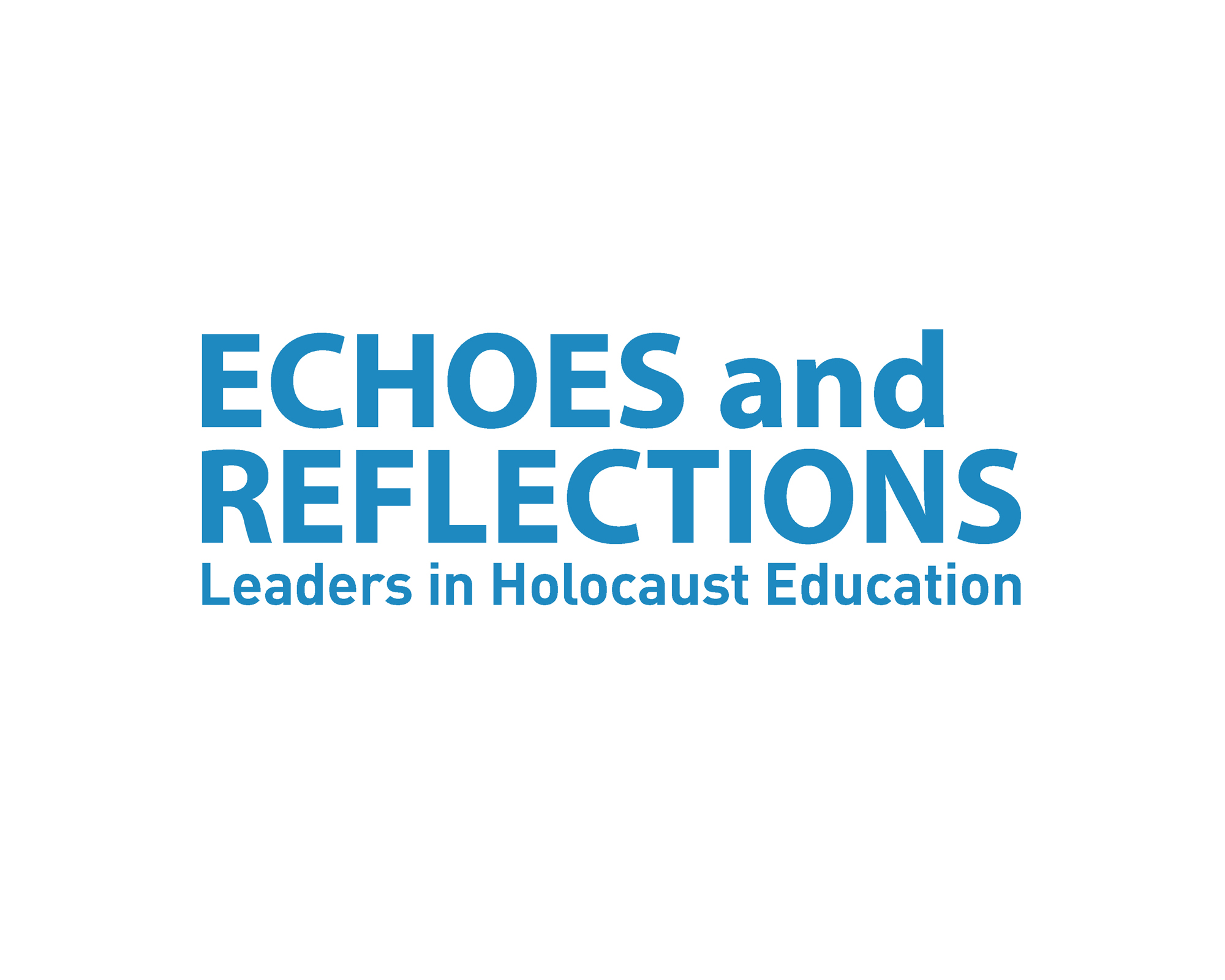Back to School with Echoes and Reflections - Part 4

Today continues a 10-part series called “Back to School with Echoes and Reflections.” Each installment takes a detailed look at one of the 10 Echoes and Reflections lessons.
Echoes and Reflections is a multimedia professional development program for secondary school teachers in the United States that provides them with accurate and authentic Holocaust information for their classrooms. Programs are held around the country at no cost to teachers or schools, and participants receive a complimentary copy of the 10-part Teacher’s Resource Guide that equips them with the tools they need to help today’s students study the Holocaust as a significant event in human history.
Echoes and Reflections combines the resources and competencies of t hree world leaders in education―the Anti-Defamation League’s experience in curriculum and professional development, access to USC Shoah Foundation’s Visual History Archive of survivor and witness testimonies and digital educational tools, and Yad Vashem’s historical expertise and primary source materials―resulting in the most comprehensive Holocaust education program available.
Echoes and Reflections includes everything educators need to teach the complex issues of the Holocaust. Each lesson within the Echoes and Reflections Teacher’s Resource Guide explores a different aspect of the Holocaust and encourages students in grades 6-12 to build an authentic and comprehensive portrait of the past as they frame their own thoughts, resulting in a deeper level of interest and inquiry.
The modular design of the Echoes and Reflections Teacher’s Resource Guide includes photographs, literature, artwork, diary entries, government documents and other primary source materials that teachers may easily photocopy and distribute to students. Lessons also incorporate testimony from USC Shoah Foundation’s Visual History Archive on DVD Each lesson addresses Common Core State Standards, and each one has been integrated into IWitness. IWitness is USC Shoah Foundation’s educational website that provides students and teachers access to more than 1,300 full life histories and testimonies of survivors and witnesses to the Holocaust and other genocides from the Visual History Archive for guided exploration, multimedia projects, activities and lessons.
To date Echoes and Reflections has prepared almost 20,000 educators and community leaders across the United States to use the Teacher’s Resource Guide effectively. Teachers interested in more information about Echoes and Reflections should contact echoes@adl.org.
Lesson 4: The Ghettos
Lesson 4 takes an in-depth look at the Lodz ghetto in Poland to introduce students to life in the Jewish ghettos of eastern Europe. Students first watch testimony from two survivors of the Lodz ghetto, Ellis Lewin and Joseph Morton, and then discuss the key facts about the Nazis’ ideology and plans for separating Jews from the rest of the population.
They also discuss Jewish responses to the ghetto – the hardships they faced, attempts to keep their dignity and sanity, and leadership. Two poems written by children in the Lodz ghetto illustrate for students what it was like for children to grow up in the ghetto.
After watching testimony from other survivors of the Lodz ghetto, teachers help students identify the various ways Nazis tried to control, confine and weaken Jews by forcing them into the ghettos.
Lesson 4 includes excerpts from the diary of Dawid Sierakowiak, who lived in the Lodz ghetto from age 14 to 18 and died of tuberculosis, exhaustion and starvation, also known as “ghetto disease.” Dawid’s diary paints a remarkably detailed, honest and self-aware portrait of ghetto life, providing jumping-off points for students to discuss the importance of school, how one maintains optimism and a sense of humor in difficult times, and how people lost or restored hope.
Teachers can also share a handout of a Monopoly game that adults in the Theresienstadt ghetto made for children, and talk with students about the irony of playing Monopoly in the ghetto and why the adults made the game for their children. Another optional assignment encourages students to do outside research on music, art or writing produced in the ghettos and present to the class what these unique primary sources add to our understanding of ghetto life that facts and figures do not.
Next week – Lesson 5: The “Final Solution”
Like this article? Get our e-newsletter.
Be the first to learn about new articles and personal stories like the one you've just read.